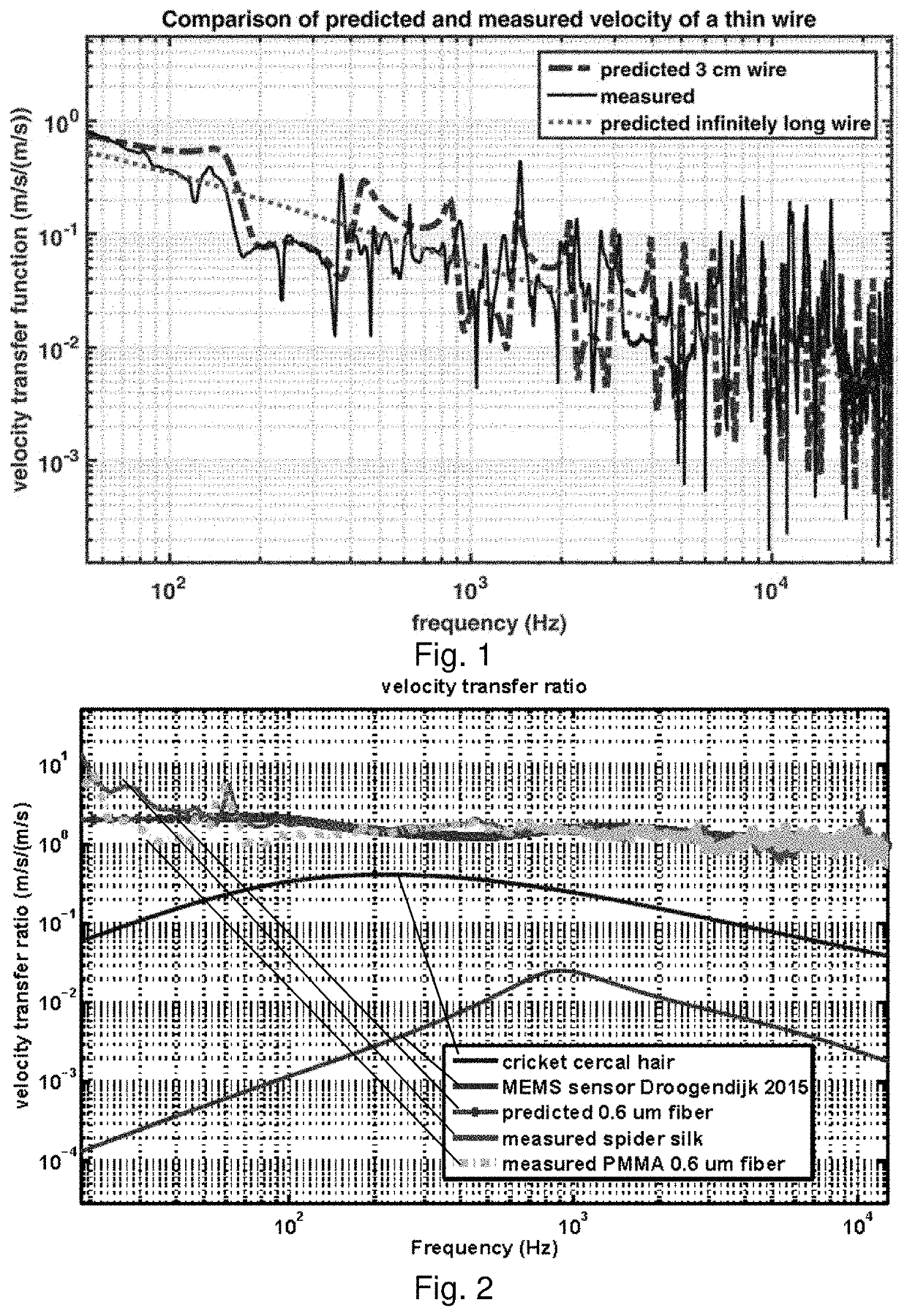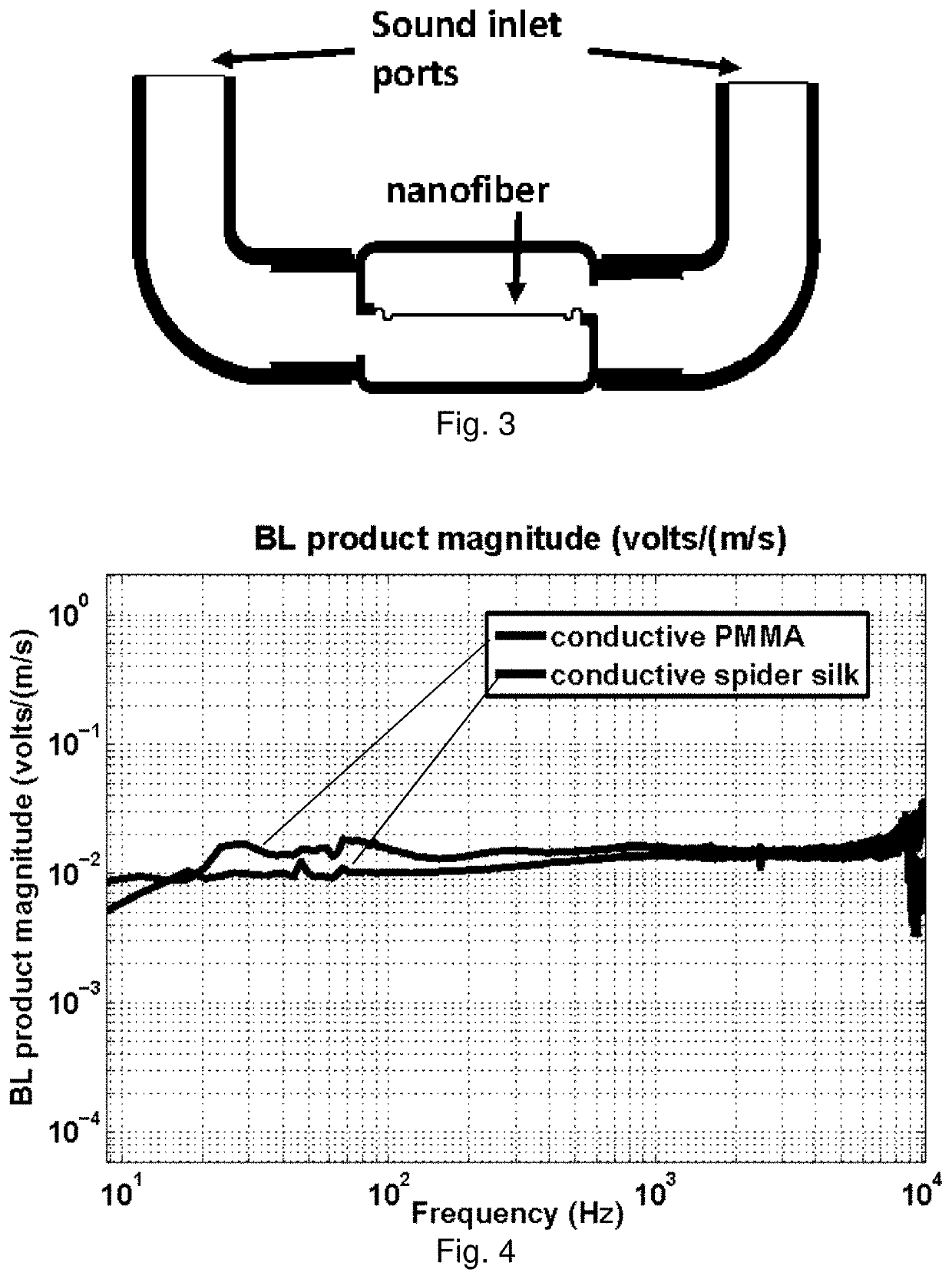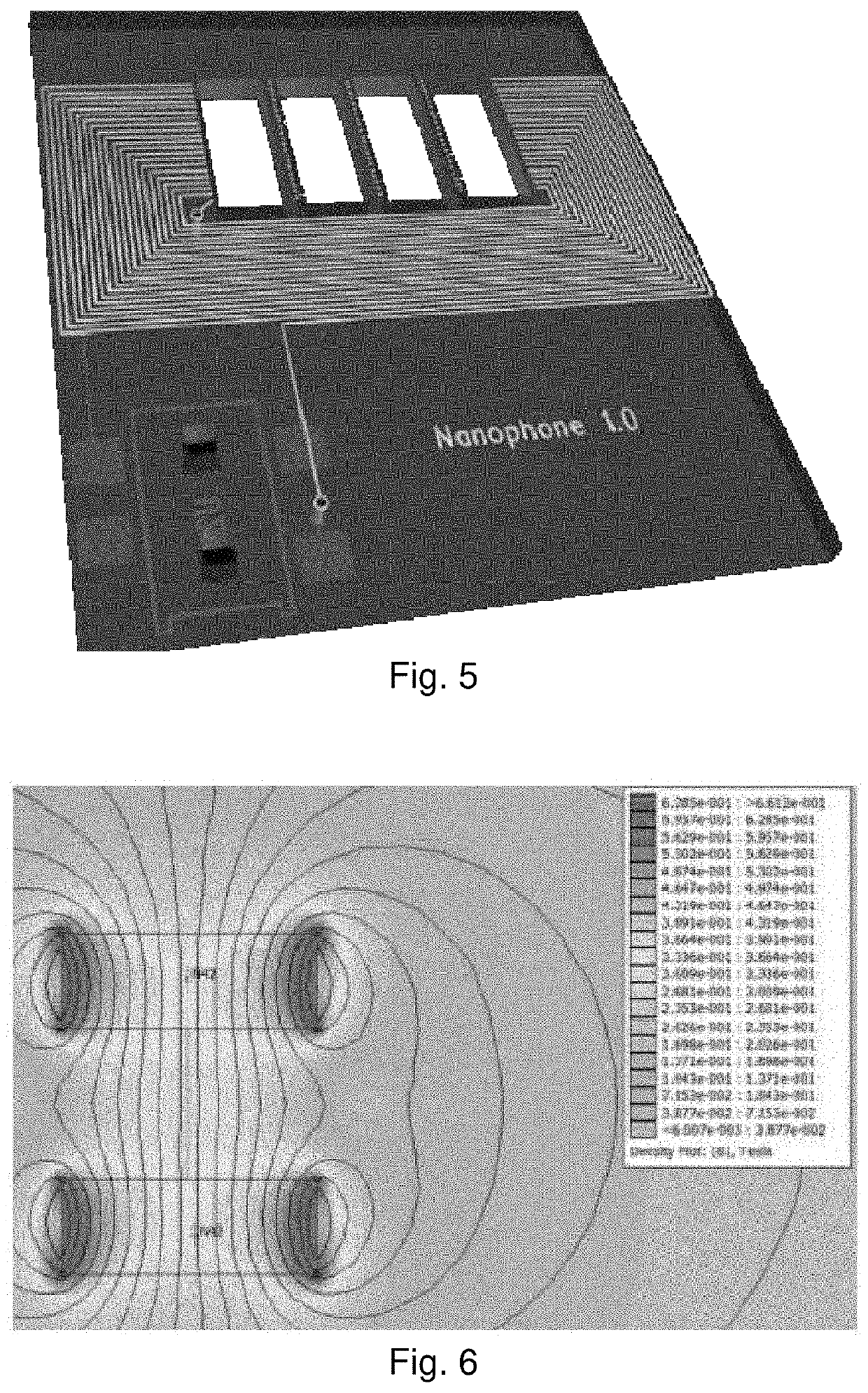Fiber microphone
- Summary
- Abstract
- Description
- Claims
- Application Information
AI Technical Summary
Benefits of technology
Problems solved by technology
Method used
Image
Examples
example 1
[0178]In order to verify the results of the analytical model for an acoustic sensor, measurements were obtained of the response of a thin wire due to a plane wave sound field. Stainless steel fiber having a diameter of 6 μm was obtained from Blue Barn Fiber (Hayden, Id.) [72]. This is intended to be spun into yarn for clothing. The fiber is in the form of continuous strands having a length of several centimeters.
[0179]A single strand of stainless steel fiber was soldered to two wires spanning a distance of 3 cm. The fiber was not straight, in this experiment, which may influence the ability to accurately predict its sound-induced motion. The fiber was placed in an anechoic chamber and subjected to broad-band sound covering the audible range of frequencies. The sound pressure was measured in the vicinity of the wire using a B&K 4138 ⅛th inch reference microphone. The sound source was 3 meters from the wire which resulted in a plane sound wave at frequencies above approximately 100 Hz...
example 2
[0210]In some applications, an infrasonic sensor is desired, with a frequency response fl that extends to an arbitrarily low frequency, such as a tenth of hundredth of a Hertz. Such a sensor might be useful for detecting fluid flows associated with movement of objects, acoustic impulses, and the like. Such an application works according to the same principles as the sonic sensor applications, though the length of individual runs of fibers might have to be greater.
[0211]In addition, the voltage response of the electrode output to movements is proportional to the velocity of the fiber, and therefore one would typically expect that the velocity of movement of fluid particles at infrasonic frequencies would low, leading to low output voltages. However, in some applications, the fluid movement is macroscopic, and therefore velocities may be appreciable. For example, in wake detection applications, the amplitude may be quite robust.
[0212]Generally, low frequency sound is detected by senso...
example 3
[0216]To intuitively illustrate the transverse motion of spider silk due to fluctuating airflow in the direction perpendicular to its long axis, sound is recorded from the silk motion. The complex airborne acoustic signal used here contains low frequency (100 Hz-700 Hz) wing beat of insects and high frequency (2 kHz-10 kHz) song of birds. Spider dragline silk with diameter d=500 nm was collected from a female spiderling Araneus diadematus (body length of the spider is about 3 mm). A strand of spider silk (length L=8 mm) is supported at its two ends slackly, and placed perpendicularly to the flow field. The airflow field is prepared by playing sound using loudspeakers. A plane sound wave is generated at the location of the spider silk by placing the loudspeakers far away (3 meters) from the silk in our anechoic chamber. The silk motion is measured using a laser vibrometer (Polytec OFV-534).
[0217]While the geometric forms (cob-web, orb-web, and single strand), size and tension of the ...
PUM
 Login to View More
Login to View More Abstract
Description
Claims
Application Information
 Login to View More
Login to View More - R&D
- Intellectual Property
- Life Sciences
- Materials
- Tech Scout
- Unparalleled Data Quality
- Higher Quality Content
- 60% Fewer Hallucinations
Browse by: Latest US Patents, China's latest patents, Technical Efficacy Thesaurus, Application Domain, Technology Topic, Popular Technical Reports.
© 2025 PatSnap. All rights reserved.Legal|Privacy policy|Modern Slavery Act Transparency Statement|Sitemap|About US| Contact US: help@patsnap.com



